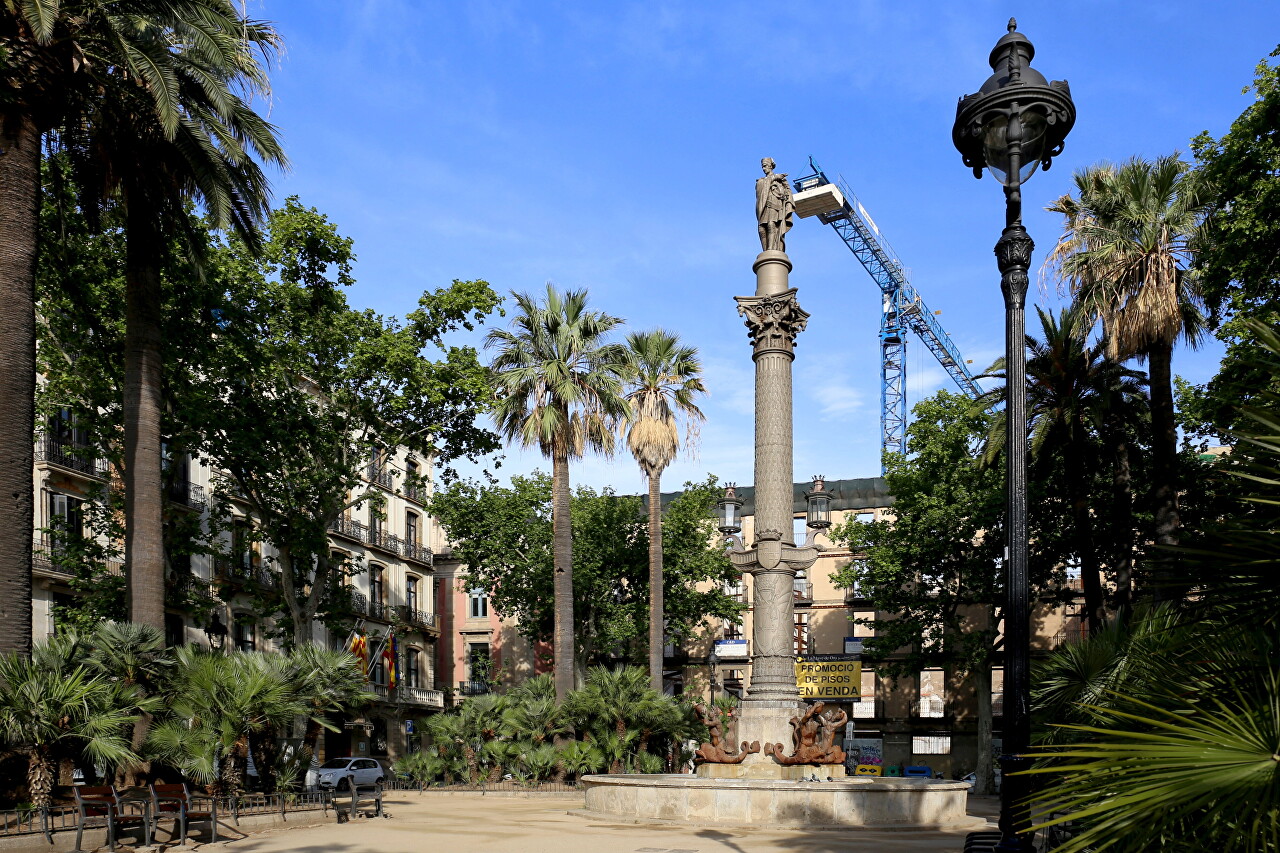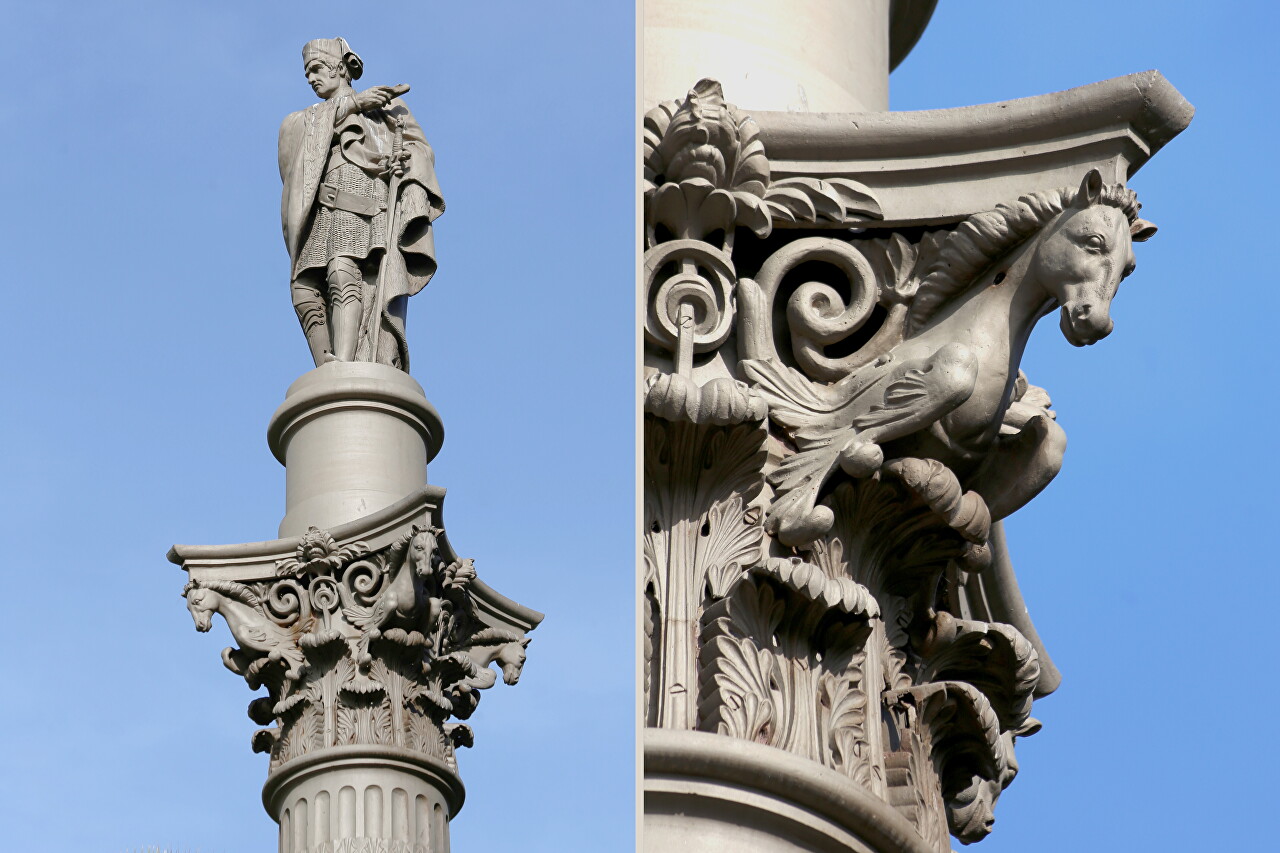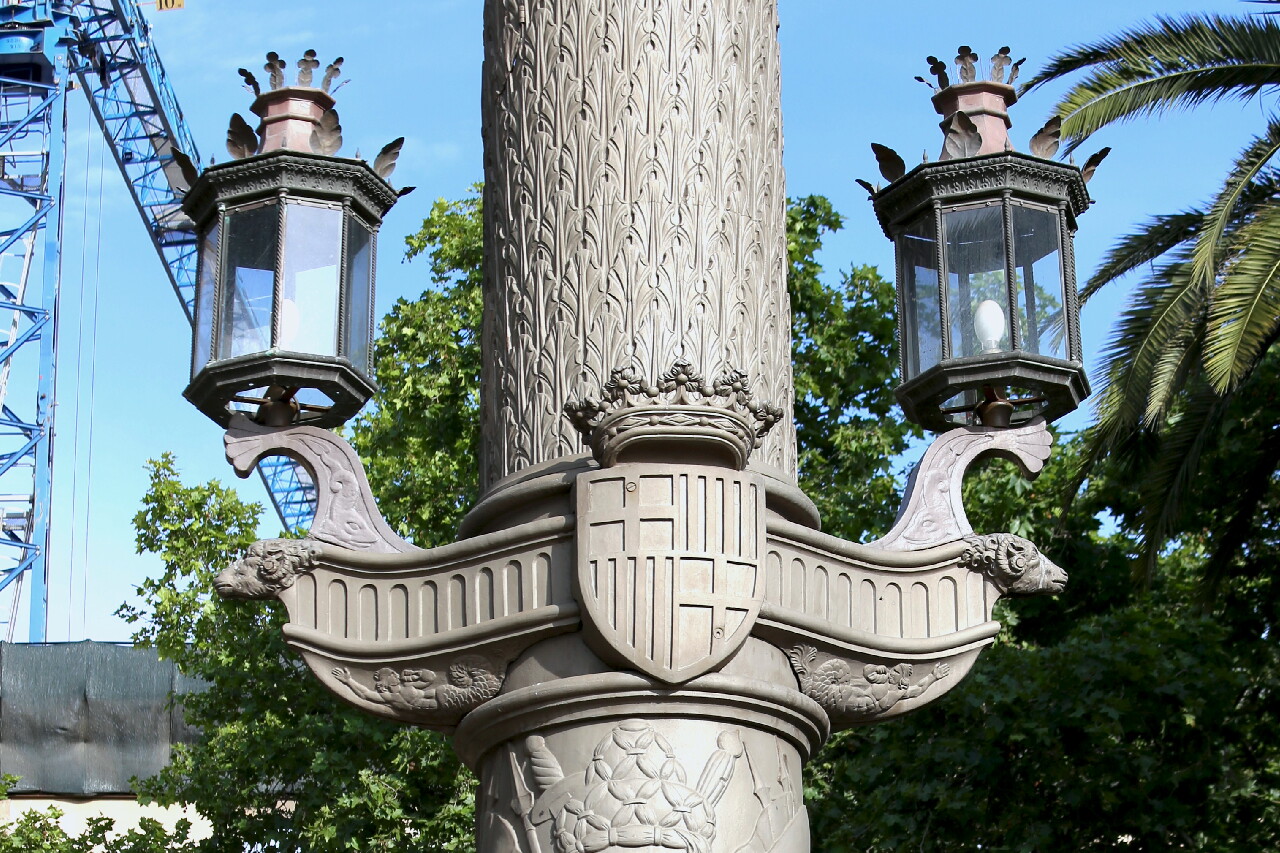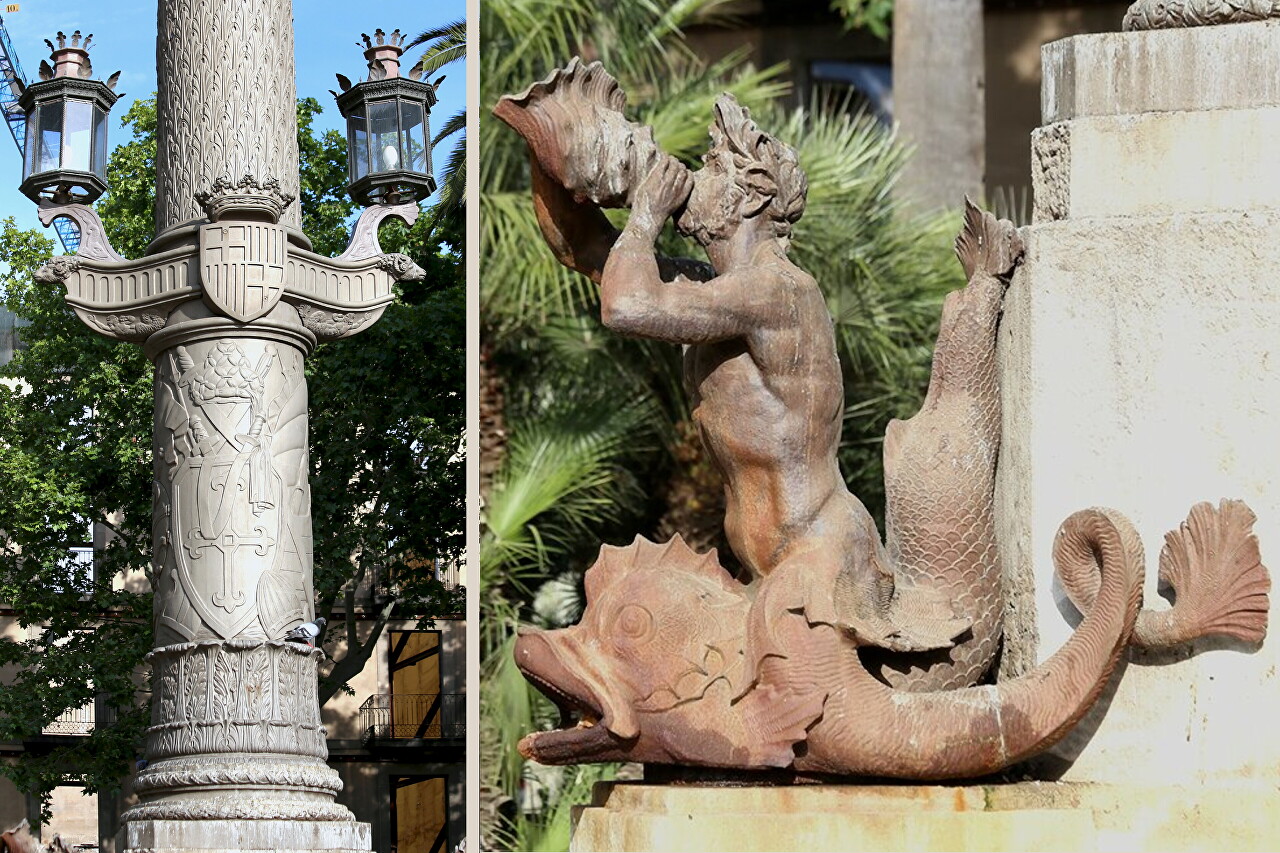Monument to Galceran Marquet
The Plaza del Duque de Medinaceli in Catalan is located in the middle part of the Passeig de Colom and occupies part of the territory of the ancient monastery of St. Francis, founded in 1276. It was a large abbey whose domain extended to the Ramblas. As a result of secularization in 1835, the monastery was abolished, and then destroyed by fire. Two years later, the land was transferred for development to the Duke of Medina (the oldest ducal family of the Spanish Kingdom). The captain-governor of Catalonia, Baron de Mer, persuaded the new owner to develop part of the land for public use.

The square was built between 1844 and 1849 to the design of Francisco Daniel Molina, who became famous as the author of the Royal Square in Barcelona. During the Civil War, the square was named after Manuel Asanya, President of the Second Republic. The center of the square is decorated with a monumental fountain, designed by the same Daniel Molineau. The proximity of the sea influenced the theme of its decorations, which were embodied in bronze by the sculptor Josep Anicet Santigosa.

A cast-iron column with a height of 5.5 meters was erected on the pedestal in the fountain bowl, and this material was used for decorative purposes for the first time in Barcelona. During the design process, the question arose of whose statue to put on top of the column. There were proposals to memorialize Christopher Columbus, Blasco de Garay (Commander of the Spanish Armada under Charles I), but eventually Galceran Marquet, vice admiral of the Catalan Navy in the war against the Genoese in 1331, was chosen. By the way, the Columbus Monument was erected three blocks to the south in 1888, also in the form of a column, which is an order of magnitude larger.

It is believed that the figure of Marche was made by the famous sculptor Damia Campeny( Damia Campeny), but this is doubtful, since the master was then already 80 years old. Perhaps he was only the author of the sketch, and the sculpture itself was cast by Santigosa. The fountain was opened on July 29, 1851, was restored in 1929 and 2007 and was included in the list of cultural heritage of Catalonia.
